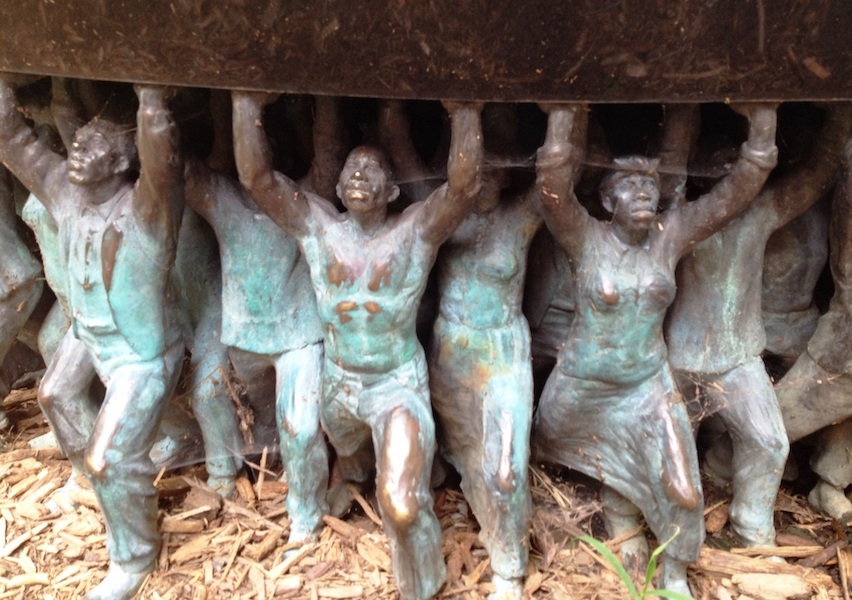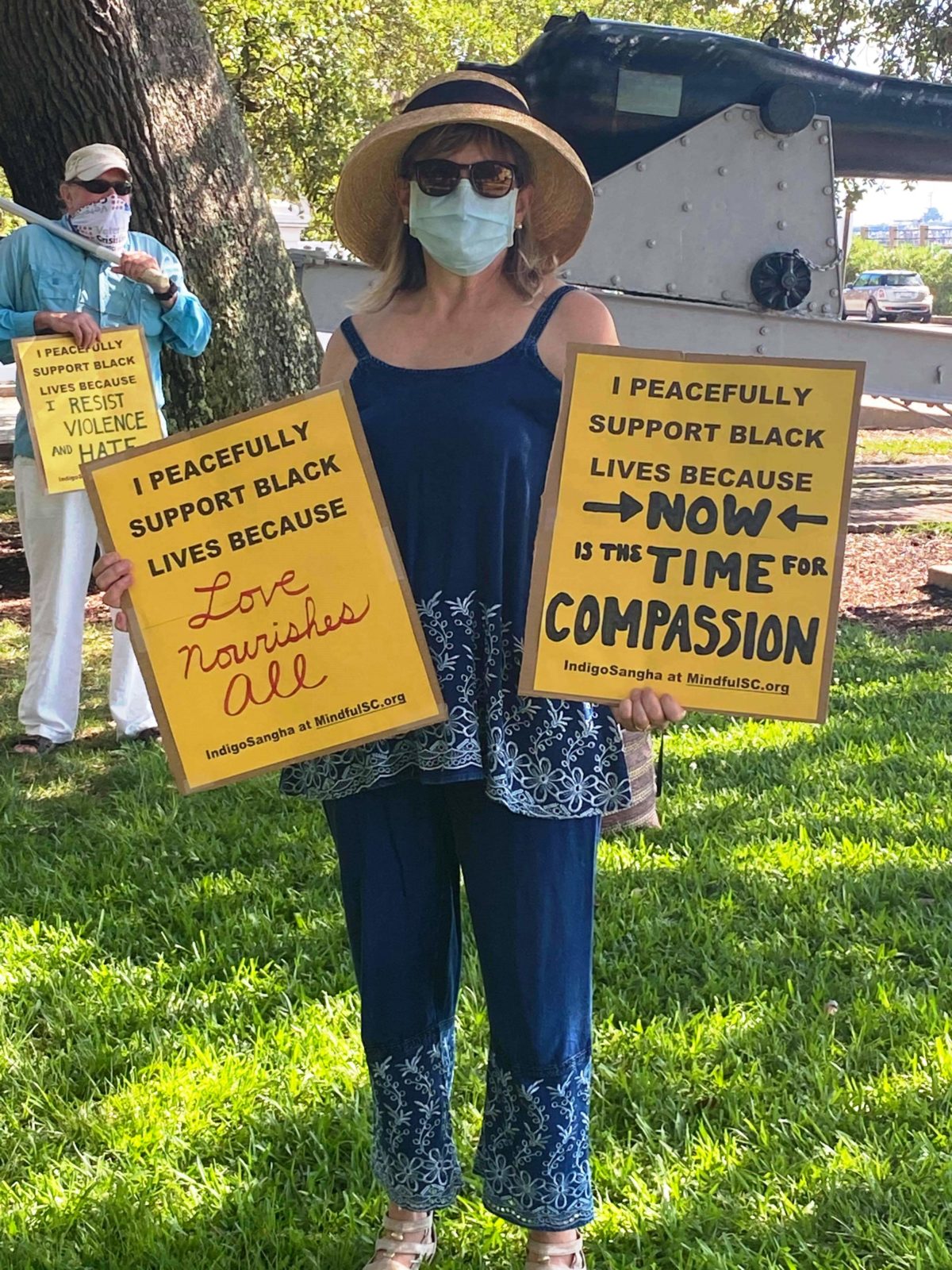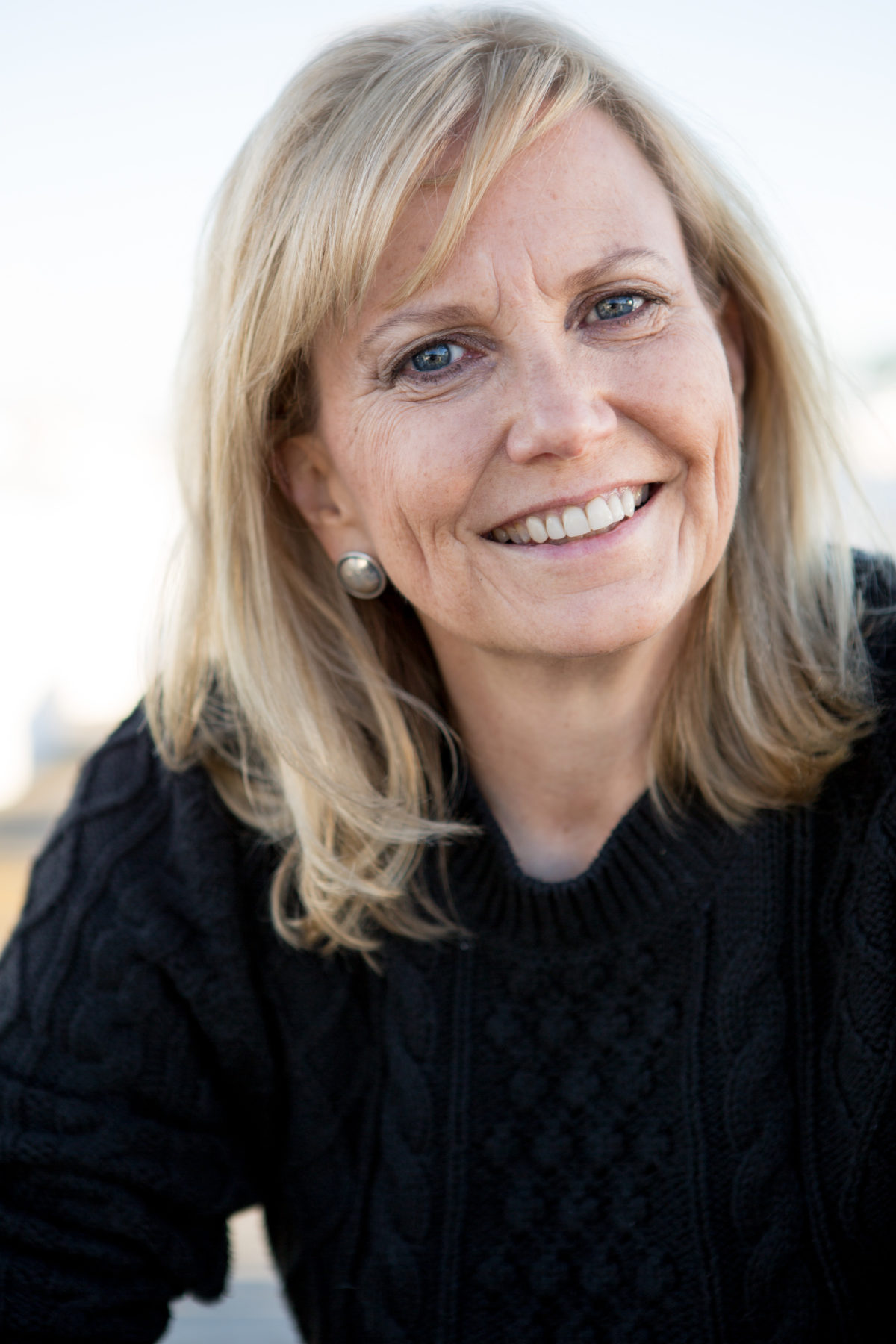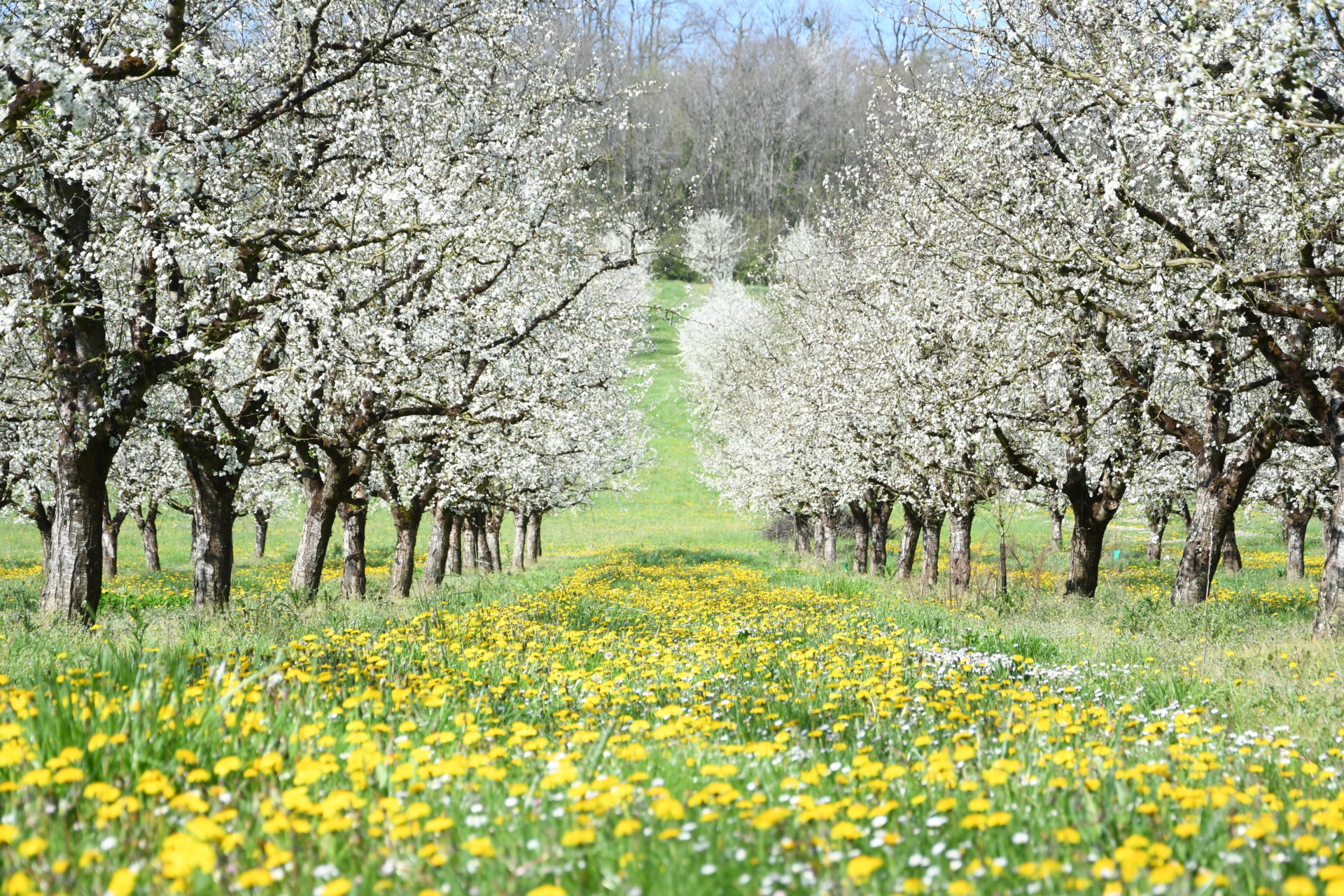The Root of Healing
By Heather Lyn Mann

I feel so fortunate to breathe in and out with ease. The coronavirus teaches me that breathing is a gift. It’s proof of life. The mere fact that I can breathe is a miracle.
The Root of Healing
By Heather Lyn Mann

I feel so fortunate to breathe in and out with ease. The coronavirus teaches me that breathing is a gift. It’s proof of life. The mere fact that I can breathe is a miracle. The awareness that I’m breathing is a miracle, too, because it means I have consciousness—that the handful of Earth’s elements coming together to form this body possesses awareness. I can know I am the Earth herself experiencing the Earth.
Each breath I take with ease contains joy. With consciousness, I look deeply and have insight into what’s happening within and outside this body and see the causes and conditions manifesting this very moment. Insight into the true nature of reality is both miracle and faith because I trust my insight; I have faith in what I know, and it gives me confidence to act.
With insight and confidence, I act more responsibly, skillfully, and generously to create happiness for myself and others (people, plants, animals, and minerals). Breathing, I wake to my agency, to my ability to choose when and how to engage with the world within my reach. Human agency is a miracle. When the wind blows, a tree can only bend or snap, but a human with agency can push back against it, turn around and move with it, lay down to get under it, or anticipate it and get out of its way.
The winds of coronavirus are blowing and setting lungs on fire. Many people are suffering. I cannot push back against the virus. I may not be able to get out of its way. But in this moment, I can accept it and move with its force by breathing with the sick—breathing for the sick—right where I am. As I do, conscious breathing becomes my prayer of love and healing.
The infirm give me a gift in return: the awareness that life is fleeting. It may not be this body’s turn to fail yet, but soon. Soon enough. With this realization, I prostrate upon the ground, put my belly to the earth, and give thanks to the whole that I am alive and awake and well and able to have this day with countless easy breaths.
I am grateful to the coronavirus itself for giving humankind a global opportunity to stop, look, and see. Breathing, I see the interbeing of the pandemic and the climate crisis. They are both global disasters of our environment. They make humankind’s surroundings—the places where we interact and on which we depend—unsafe. The interbeing between humans and the environment is easy to see, also. When the world is unwell, we are unwell. I breathe a prayer for humankind to help heal our planet body to make it safe for all.
I see and feel the catastrophic impacts of injustice too. I see it in the uneven distribution of the pandemic and climate suffering and death. I see it in recent sounds and images of violence against black bodies. I can even see the old roots of injustice in the shape of the land in my neighborhood—the clearly visible remnants of dikes and dams built by enslaved Africans in the late 1600s to create the rice fields of the former plantation upon which my South Carolina home sits. I practice walking meditation on crests of mounded earth and look with compassion into the reality of slavery in this place. I want to understand the historical violence that continues to echo in the water, soil, and society. Looking, I feel sick in my gut. I breathe for those who could not and cannot breathe. I breathe for those declaring, “I can’t breathe.”
Before my neighborhood land was a rice plantation, it was home to the Kusso-Natchez Nation—the first people who lived in the low country of Charleston, South Carolina. White people came to “own” this soil through violence and disease. My race, my people, took this land from the Kusso-Natchez people to exploit these rich soils and waters with slave labor. It made us wealthy. Charleston was the richest city in the richest colony of England’s North America for more than 100 years. But here is suffering in unchecked greed, and I see it with sudden clarity so jarring it makes my tongue taste of gunmetal. Again I breathe, turn inward to identify a bit more of what needs healing in myself and in this place.

Helping My Ancestors
Not long ago, a woman who lives across the Atlantic from Charleston asked me what it felt like to practice mindfulness in territory un-ceded by indigenous people. She explained that although she identifies with two countries, she is a direct descendant of the first people of both her nations. Her people never displaced others nor were they displaced.
This was a very deep question. She wanted to know how I practice with (or perhaps how I function as the continuation of) ancestors who were ethically dis-eased. The question arose in an international Earth Holder gathering so my answer went something like this:
Earth Holders carry in our hearts an aching sorrow because we’re mindful of the harm our species has done and is doing to Mother Earth. The domination, exploitation, and violence toward sentient beings on Earth, along with the despoiling of air, water, and land that inter-are with all beings, breaks our hearts. Plus, Earth Holders know our individual daily actions and choices, which may bring us convenience and comfort, make us complicit in causing harm. Many Earth Holders in the white race are increasingly aware that we have been and perhaps still are complicit in gravely harming Black, indigenous, and other people of color (BIPOC). The relatively comfortable lifestyle of white Americans is rooted in acts of domination, exploitation, and violence not only toward Earth but also toward people who are marginalized and oppressed. America’s white supremacist culture normalizes violence and exploitation. I see evidence of this daily in the way we police, invest in our military, deregulate capitalism, deliver health care, fund schools, entertain ourselves, and tell the story of our nation’s origins and accomplishments. To me, waking up to America’s history of violence feels like the shadow of sorrow extending from my Earth Holder broken heart is spreading. As I get a fuller understanding of my race’s historic and present brutality, my pain deepens and grows. In response, I resist more of the normative ways of my race and class. I “center” voices from historically oppressed communities so I can hear wisdom that was previously held at the margin of my life. I take action to transform myself, my ancestors, and those harmed. Simply put, it feels like the engaged part of my Buddhist practice is becoming more tender, skillful, and vital to a healthy continuation for all, human and non-human.
I’ll also add this to the answer I gave that day. I’ve come to ask myself: How am I friend-making?
- Do I have personal conversations with a diverse range of people who are directly impacted by climate disasters, social inequities, and racial injustices?
- Do I deeply listen to those whose histories and ways of knowing are different from my own?
- Is the flame of my aspiration to ease suffering bright enough to keep me seeking, welcoming, and learning from diverse points of view, human and non-human?
- How can I show up as an ally, add my energy to compassionate direct actions that stop exploitation and injustice, honor the dignity of all people, and create opportunities for peace and reconciliation?
- How can I be more sensitive and skillful around the intersectionality of different forms of oppressions (supporting trans-Black lives and Black women’s lives, for example)?
Questions like these keep me humble and not-knowing. They make my steps on this path a prayer to heal the trauma of my white race, the trauma of the people we have harmed and continue to harm, the trauma of the human species, and the trauma of the warming Earth.
Despite the suffering I see, I do not feel overwhelmed. Conscious breathing keeps me steady and connected to my love for the world. Breathing, I sit with and move through the pain I witness and feel in order to arrive at a place of compassionate direct action. I have faith and confidence in my insight and agency. Healing action makes me happy!
Conscious breathing is the source of understanding and healing. It’s truly a miracle. With conscious breathing, it is possible to transform the injustice and disease of the past into peaceful well-being in this present moment.

photo by Rev. Thomas Dixon
Heather Lyn Mann, True Lotus Peace, co-founded and practices with Indigo Sangha of greater-Charleston, South Carolina, US, and is an active participant in the Sangha’s Racial Justice Project website at mindfulsc.org/racial-justice. Heather was among the first Earth Holders in 2014 and served on the caretaking council for five years. In 2016, Parallax Press published her death-defying, life-affirming memoir, Ocean of Insight: A Sailor’s Voyage from Despair to Hope.

